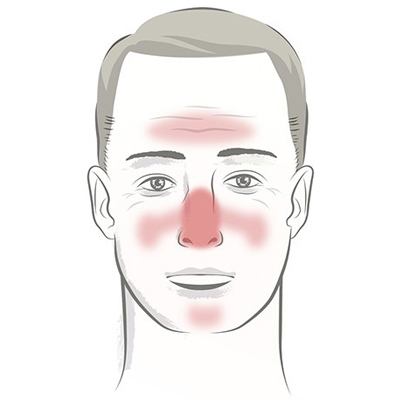Rosacea – Understanding the Condition
Rosacea – A Hard-Hitting Condition for Those Over 50
While the general population is enjoying a longer life with better health than previous generations, there are still concerns over some health conditions that may impact one’s quality of life. Some skin disorders may seem benign at first, not prompting a visit to the doctor’s office. However, rosacea, a common skin condition impacting those over the age of 50, requires attention sooner rather than later.
For older adults, understanding what rosacea is and its warning signs, along with the path toward diagnosis and treatment, is helpful in creating a quality of life that is both comfortable and sustainable throughout the aging process.
Understanding the Condition
More than 415 million adults have rosacea around the world, with an estimated 40% of patients over the age of 50. The skin condition, while widely prevalent, is not fully understood, since it has not clear, singular cause. Instead, rosacea is characterised broadly as inflammation of the skin on the face, typically leading to redness or irritation. There is no current cure for rosacea once it appears, but there are several common symptoms that can alert an individual that it may be time to visit the doctor.
Most individuals do not recognise rosacea is causing several symptoms related to the condition of their skin. The most common warning signs of the skin disorder include:
- Facial redness
- Bumps and pimples
- Eye irritation
- Skin irritation
- Dryness or itchiness
- Flare-ups that come and go over time
Individuals who are fair-skinned or who have a family history of the skin condition are more likely than others to develop rosacea as they age. While the condition can appear as early as age 30 for some adults, the aging population is more at risk. This is why it is crucial to know the symptoms of rosacea so that a correct diagnosis can be provided quickly.
Complications in Old Age
Getting the right diagnosis for rosacea is not always an easy task, according to a group of medical negligence specialists in the UK. They share that several conditions that impact the skin have similar warning signs as rosacea. Because there is no diagnostic test that provides a clear yes or no for a rosacea diagnosis, individuals, especially those who are older, may be initially misdiagnosed with another condition. Serious conditions including lupus, as well as less severe skin issues, such as adult acne, psoriasis, and eczema, present similarly to rosacea. Skin patches and rashes, irritation, flushing, and bumps may look similar for each condition, but the path toward effective treatment differs for each skin disorder.
When the correct diagnosis is not provided in a timely manner, older individuals face more serious consequences over time. A leading rosacea resource online states that the condition is progressive, meaning its symptoms and ancillary side effects get worse over time. This can be exacerbated among older adults, as they are more likely to have other health conditions that impact their well-being. Without medical intervention for rosacea after a correct diagnosis, symptoms can impede a patient’s ability to live life the way they want. Social interactions may be reduced, emotional health may deteriorate, and discomfort from untreated rosacea can lead to other medical issues that are more challenging to treat among older patients.
Timely Treatment Is Key
Fortunately, adults who receive a proper diagnosis of rosacea have several options for treatment that can significantly reduce or altogether eliminate symptoms and discomfort. Many patients with rosacea opt for a combination of therapy and medication to assist in their treatment. Minimising triggers, including an unhealthy diet, overexposure to the sun, and high-stress environments, can help reduce rosacea symptoms. Topical and oral medications may also lend a hand in reducing redness and irritation on the face. It is important to work with a medical professional to understand the best course of action for treating rosacea over time, especially when there are other health issues present.
When the right combination of treatment is provided, after the right diagnosis, older individuals with rosacea can focus on what matters most in their golden years





